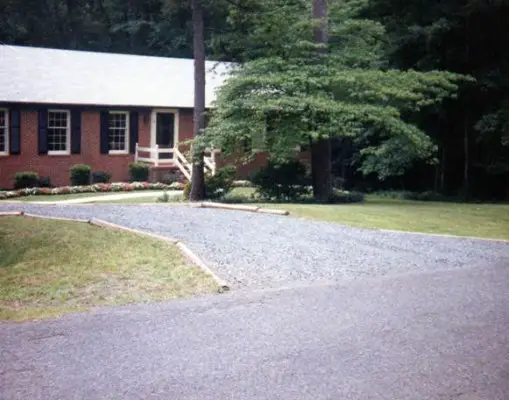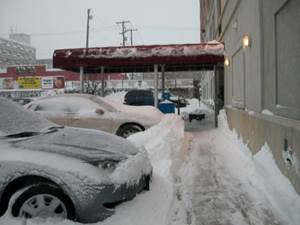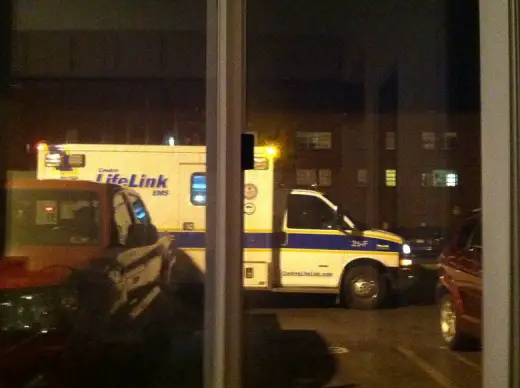American Housing, New US Architecture, Washington DC Life, Architects
Joel Solkoff’s Column – Volume II, No. 3
Column by Joel Solkoff, PA, USA – American Housing Trends
Writing on architects plus their role in the imminent global Baby Boom housing crisis – Joel Solkoff’s Column
______________________________________________________________________
Joel’s Column Volume II, Number 3
Where will I live? Plus…
Theme
I have purchased two houses in my lifetime. The first was on Capitol Hill, in Downtown, Washington, D.C. which had a landmark plaque posted on the entrance. It was a beautiful house 100 years old where my former wife and I raised two children.
That was in 1981. The market was bad that year and we had a good deal. Next door, our neighbors had raw sewage running down the adjacent yard. Sitting on the back porch was often a noxious experience.
My wife worked for the government. The inside, which had been meticulously furnished at considerable loss to the previous owner, was a showpiece. On one occasion, we had a grand party presided over by an ambassador who stood up from his wing back chair, shook my hand, and said, “I would like to thank you for your service to the United States Government.”
Today, as a paraplegic, I could not live in that house. Several years after we moved, I lost the ability to walk. Today, I could not walk up the wrought iron entrance way, nor the 17 stairs to the bedroom area with the only full bath, nor climb to the roof for Fourth of July fireworks with an astonishingly beautiful view of the Capitol and the Washington Monument (which toddler Joanna referred to as “The Big Pencil.”)
At the time, gentrification was moving slowly. Our family and many of our neighbors regarded ourselves as urban pioneers. I was mugged at knife point en route to the library. The now stately Union Station, six blocks away, had yet to receive the deluxe treatment and taking a train involved stepping on wooden boards.
We afforded it through several strokes of good luck and by combining our salaries to pay for the intense mortgage. Our daughter Joanna was raised by Eunice Shriver, a kindly African-American woman, who took in the gentrified children at her home next door.
We rarely saw our daughter, rushing her through a cranky breakfast and putting her to sleep after a long workday. Eunice was forced out by prosperity when Joanna then attended the dreadful public school run by the District of Columbia.
Times have changed. Fortunately, we left by then—a new baby raising the issue of seeing our children at all and moving to the suburbs where the schools were adequate but housing impossible and the commute long and difficult.
This was our second house—the last house I owned.
How we came to live here is a story for another time. What matters is that the house was located in the suburbs where the public schools had not yet deteriorated and where there were decent colleges at affordable prices nearby where both my daughters graduated with honors from the still highly-reputable and affordable University of North Carolina.
Twenty years earlier in 1970, the demographics of the United States had changed substantially. No longer did most of the United States population live in cities. By 1970, most of our population had shifted to the suburbs to detached one and two story homes. Two cars were essential for a working couple with children involved with activities all over town—soccer, baseball, dramatic clubs.
This is the theme of this column—the importance of destroying the suburbs. Pulitzer Prize winning journalist David Halberstam describes in The Fifties the significant changes that have taken place in my lifetime—changes that anyone in the architecture, engineering, and communications community must take into account because these changes, for reasons I will continue to reiterate in future columns, must be reversed in a massive demographic shift not seen since 1945.
From all available evidence, the AEC community seems oblivious to this reality and the benefits to U.S. and global society.
Let’s take a sample from Halberstam’s account on how we as a population made the dangerous mistake of moving to the suburbs, dangers to be elucidated:
“What was taking place was nothing less than the beginning of massive migration from the cities to the farmland that surrounded them. Starting in 1950 and continuing for the next thirty years, eighteen of the nation’s twenty-five top cities lost population. At the same time, the suburbs gained 60 million people. Some 83 percent of the nation’s growth was to take place in the suburbs.”
To repeat, “By 1970, for the first time there were more people living in suburbs than in cities.”
Aside or The Medium is the Message
In my previous column, there was a notable lack of subheads resulting in backlash (Webster’s: “a sudden violent backward movement or reaction”) as readers shifted back and forth between the luxury of Zaha Hadid’s downtown Miami to the decay of rural Pennsylvania where I live.
In 1964, the social/literary world received a jolt when the Canadian genius Marshall McLuhan published Understanding Media: The Extensions of Man predicting the Internet decades before it became reality. The book popularized the expression The Medium is the Message.
Here is an image of the Guttenberg Bible first published in the 15th Century and generally credited with introducing publicly available verbal literacy:

screen shot by Joel Solkoff of the Morgan Library and Museum Collection
In McLuhan’s previous work Guttenberg Galaxy, the author argues:
“The invention of the alphabet, like the invention of the wheel, was the translation or reduction of a complex, organic interplay of spaces into a single space. The phonetic alphabetic reduced the use of all senses at once, which is oral speech, to a merely visual code. Today, such translation can be effected back and forth through a variety of forms which we call the ‘media of communication.’ But each of these spaces has unique properties and impinges upon our other senses or spaces in unique ways.”
I admit McLuhan is not easy to understand. What I am trying to do with this column is shake you up. The medium is the message holds that it is not so much content, but the medium regardless of content that is the message.
Formerly, in Guttenberg’s day, the “medium of communication” was clear. In this column, I do not want to provide a long essay on this and that. I want to interrupt the flow.
Specifically, a prominent architect told me that the Americans with Disabilities Act and related building codes provide sufficient protection for the elderly and disabled. Nonsense.
I want to you to see my world as a song, a movie, a photograph, something unexpected.

Mandala made of sand in the Sera Monastery, Lhasa; published by permission of Wikipedia Commons
Back to suburban house theme
In 1995, I lost the ability to walk. I had been irradiated twice for Hodgkin’s disease, a cancer of the lymphatic system. The linear accelerator burned a hole in my spine which cannot be repaired. For a while, using a cane, a wife, and two children, I was pushed up the main staircase, but the exhaustion was overwhelming.
I could still drive and work both at Northern Telecom and IBM, but at the time virtually no accommodation was afforded me such as working at home.
When I obtained a mobility device manufactured by Amigo Mobility International, which invented the POV scooter, my life improved considerably. Nevertheless, my ability to do laundry, work in the kitchen, or conduct an independent existence was limited.
The gravel in the driveway made it difficult to move my device. A ramp through the front door would have helped. The poorly paved street led to a dangerous highway where going for food was impossible. No decent transportation system was available. I was a prisoner in my own home.
In 2000, following the conclusion of my contract with IBM, I left for the Silicon Valley of California; where there was work readily available at astonishingly good compensation. My colleagues in California were supportive and my marriage over, my children came to visit.
Now, some 20 years later, the largest generation in U.S. history is retiring. They are retiring at the rate of 10,000 a day for the next 20 years. Retirement means U.S. citizens receive checks of about $1,800 for Social Security.
“The Social Security Trust Funds’ projected depletion dates have not changed…But the fact remains that Congress needs to act to ensure the long-term solvency of this vital program,’’ explained Carolyn W. Colvin, Acting Commissioner of Social Security. “The projected year for Disability Insurance Trust Fund depletion remains 2016, and legislative action is needed as soon as possible to address this financial imbalance.’”
The depletion will take place in time for the next Presidential election.
Medicare costs, the partially-reimbursable heath care system primarily for the elderly and disabled, are deducted from Social Security checks at $122. The Medicare Trust Fund will be exhausted in 2026.
The world tends to think of the U.S. as a rich people capable of supporting ourselves. The reality is that a significant percentage of the Baby Boomer generation have already depleted savings and retirement benefits to take care of our aging parents and our minority children.
According to Stanford University’s Center for Poverty and Inequality Report for 2014, the total U.S. poverty rate is 15 percent, over 9 percent for the elderly.
The solution I strongly advocate is to destroy the widespread rotting suburbs and instead create zones of independence where the elderly are not prisoners in their homes, dependent on others for automobile transportation. The solution is to repopulate the U.S. according to a plan Ada Louis Huxtable would approve and have architects, engineers, and the construction community recognize the benefits from doing so. Our elder and disabled population must have access to museums, cultural institutions, and places to work including work at home.
Baby Boomers, if the cost of education is regarded as a factor, are the best educated population in U.S. and world history. Our productivity is the key to the financial future of the industrialized world. What to do with our millionaire-owned cities is another column. Consider, Bill de Blasio, the new mayor of New York, said in his inaugural address in January that the tale of two cities—rich and poor—must end. Fat chance.
Aside or Full Disclosure
This is where I live. It is a 20 year-old eight-story apartment building housing 90 low-income elderly and disabled individuals. It is in Downtown State College, a crumbling town of 30,000 where there is no supermarket or movie theater. In May, my rent on a wonderful but decaying apartment will increase to $874.
At least once a month, an ambulance appears outside my first story window taking away a resident all too often never to return—from the hospital to the local default nursing home Centre Crest which U.S. News and World Report provided an overall rating of one star out of five.
My disclosure and my commitment to e-architect
My friend Hadley suggested that there is a conflict of interest between my editorial content, provided in this column, and selling advertising for e-architect.
I see no conflict. E-architect provides superb photographs and excellent captions by first-rate architects on buildings of interest throughout the world. I am delighted to sell advertising as well as sponsorship of this column where news and gossip are readily for sale if only you will let me know what you want to buy. Buy me. Go ahead. I can be reached at [email protected].
I reserve my integrity for the disabled and elderly whom the architectural, engineering, and construction community have thus failed to treat with adequate attention. I certainly plan to report to you on the Department of Housing and Urban Development (HUD), with an extremely limited budget to build, the shameful manner in which HUD limits access to the disabled, and the Congress of the United States whose esteem by any measure is at an all-time low unfortunately not because of the sequestering (Washington speak for cutbacks) of funds for low income public housing projects–not, of course, that President Obama is without blame; he suggested the cutbacks.
Praise be to the Pritzker Award for Architectural Achievement
Over the years, now, I have read with fascination the fine work of Edward Lifson, Director of Communications, The Pritzker Architecture Prize as he chronicles the achievements of those delivering what the Pritzker insists on referring to as the equivalent of the Nobel Prize in Architecture.
When I think of the Nobel Prize in Literature by comparison, I am most reminded of the award to Jean Paul Sartre. Sartre refused the award, saying he did not receive it when it would do him some good. Sartre’s stature rose enormously in my estimation.
Ernest Hemingway is another good example. By the time Hemingway completed Old Man in the Sea, the award was superfluous. Hemingway’s In Our Time, The Sun Also Rises, and that wonderful tear-jerker love story—not to mention the short stories and his nasty comments to George Plimpton—should have given him the award decades earlier.
I see the Pritzker as there when it is needed. It gave Renzo Piano, after listening to hours and hours of country music in his hotel room in Houston as he was creating the Menil, the oomph needed for snobbish New Yorkers finally to let him build his masterpiece at the Morgan; may Brian Regan’s tribe increase. Also, I am most impressed by Piano’s declaration in Greece on sustainability being the future of architecture.
The Pritzker gave the award to Zaha Hadid, during her “years in the wilderness”—a quote from a superb BBC interview. In 2004, when Hadid was finally anointed with the Pritzker, her completed work consisted of 1. A fire station, 2. An art museum in Cincinnati (known for its five star chili), 3. An exhibition for a German flower festival, 4. A ski lift, and 5. A car park and tram.
Thomas J. Pritzker, president of The Pritzker’s Hyatt Foundation, noted with an understatement that astonishes me, “Although her body of work is relatively small, she has achieved great acclaim and her energy and ideas show even greater promise for the future.” Please correct me if I have done Thomas Pritzker a disservice.
I would love to see the documentation. I suspect the wisdom of granting Hadid the award was pushed through by her mentor Frank Gehry and the ever-influential Ada Louise Huxtable. I am still searching for a vocabulary to describe Hadid’s talent. Adjectives and hyperbole surround her on every side. She does not require my praise. I would appreciate understanding her–especially the work she did designing housing for workers in the Basque Region of Spain.
Also, I would like to know how much it cost to buy one of her yachts. This one:

photo courtesy of Zaha Hadid Architects, London
As for Thom Mayne, President of Sciame Construction Joseph Mizzi has spoken wonders about the BIM-compliance of Mayne’s Cooper Union Square:

photo courtesy of Sciame Construction
Be aware, Tom Mayne, my daughter Amelia Altalena Solkoff, who lives in Pontevedra, Spain, is taking a photograph of your train station. Enlisted as a stringer for e-architect, she will figure out a way to slip a camera through the wooden slats and write a 250 word appreciation. I would be most grateful if I could speak with your BIM compliance officer. Dr. John Messner, here at Penn State, has made me a BIM advocate and most of my readers do not subscribe to the LinkedIn updates.
As for Shigeru Ban, I am in awe. Finally, an architect with a social consciousness—an architect who builds homeless shelters, who cares about the issues I care about deeply. I hope Shigeru Ban forms a committee of laureates who lend their considerable talent to doing good works.
Tamedia Building, 2013, Zurich, Switzerland:
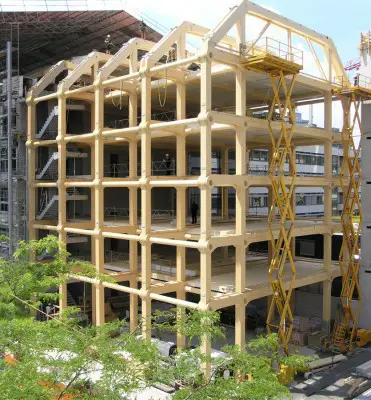
photograph : Shigeru Ban Architects Europe
Good day and good luck.
Joel
Please write [email protected]. All correspondents will receive a synopsis of Eric Church’s song: “Love Your Love the Most,” my candidate for performer at the opening in four years of Zaha Hadid’s One Thousand Museum
Copyright © 2014 by Joel Solkoff. All rights reserved.
Joel Solkoff – regular guest editor at e-architect
Joel Solkoff’s Column Vol.II, Number 1

photo : The Crescent a 1938 Art Deco hotel, Henry Hohauser architect, photo courtesy of the City of Miami Beach, Florida
J.P. Morgan Library and Museum Building, New York City, USA
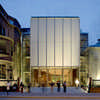
photo by Michel Denancé, provided by permission of the Morgan Library and Museum
J.P. Morgan Library and Museum Building : architecture article by Joel Solkoff. 13 Jul 2013
Comments / photos for the Zaha Hadid Miami v Rust Belt Pennsylvania – Joel Solkoff’s Column Vol.II, Number 3 page welcome
Joel Solkoff’s Column Vol.II, Number 3 : page



